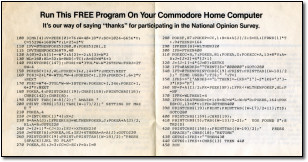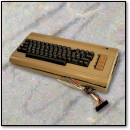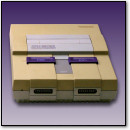 Haven’t you always wanted your very own personal desktop information terminal? With a 9″ monochrome monitor? That requires a $15-an-hour text-only information service to use to its fullest? For the same price as a full-fledged PC? Neither did anybody else, and that’s why it was on clearance in 1986.
Haven’t you always wanted your very own personal desktop information terminal? With a 9″ monochrome monitor? That requires a $15-an-hour text-only information service to use to its fullest? For the same price as a full-fledged PC? Neither did anybody else, and that’s why it was on clearance in 1986.
The XT300 ActionStation came with “$15.00 of free usage” for CompuServe, which, according to the catalog, “will vary between 1 and 2 hours” of connect time “depending on when it’s used.” This makes the old “100 Hours Free!” AOL offer look like a bargain!
Here’s some more info on the GTE XT300, from Communication News, February 1985:
GTE’s XT300 ActionStation combines an ASCII terminal with build-in modem and nine-inch high-resolution screen with a full-feature electronic telephone, speaker phone and large-capacity speed dialer. The ActionStation’s two-line capability allows simultaneously voice and data transmission, and the unit provides access to a wide range of data transmission and retrieval services, including GTE’s Telemail electronic mail service and online public data-base services. A personal directory permits storage of 50 names and telephone numbers, and eight computer sign-on procedures. It also stores 12 frequently used commands, report names and data file names of up to 36 characters.
[ Scanned from a COMB Catalog, ca. 1986 ]
If you use this image on your site, please support “Retro Scan of the Week” by giving us obvious credit for the original scan and entry. Thanks.
 Back in February, I conducted a nice interview with Steve Wozniak (“Woz”), co-founder of Apple Computer, that mostly focused on video and computer games. The piece is now on Gamasutra for all to read. Woz talks about how the Apple II design was inspired by video games, his love of Tetris, Steve Jobs as a gamer, and more.
Back in February, I conducted a nice interview with Steve Wozniak (“Woz”), co-founder of Apple Computer, that mostly focused on video and computer games. The piece is now on Gamasutra for all to read. Woz talks about how the Apple II design was inspired by video games, his love of Tetris, Steve Jobs as a gamer, and more. Keyboards, keyboards everywhere, but not a drop to drink. How many different computer keyboards have you used in your lifetime? Do you remember the good ones? The bad ones? By golly, I’ve known quite a few.
Keyboards, keyboards everywhere, but not a drop to drink. How many different computer keyboards have you used in your lifetime? Do you remember the good ones? The bad ones? By golly, I’ve known quite a few.



















